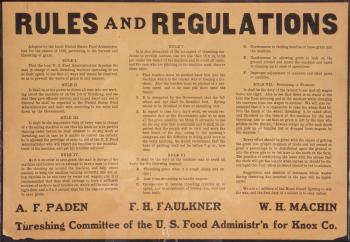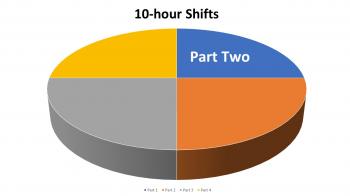As demand picked up for their products, the machine parts shop wanted to expand its operation to keep up with the orders. And immediately many questions emerged. What to plan for when demand is not only growing but fluctuating? How to match the workforce to the increased workload when it takes 3 years to train them? How to solve for retaining or hiring staff amidst rising demand for workers from neighboring businesses? How to take them through the changes the adjustment would entail when they like their current routine and have a strong resistance to change? Here are the highlights of how a comprehensive approach to change management and an integrated Shift Design can help address these challenges.
The situation:
- The facility is a machine shop with about 150 employees.
- There are two crews that each work about 60 hours a week.
- The only unused time during the week is half of Saturday and all of Sunday.
- It takes 3 years to train an employee.
- Local demand for workers of this skill set is extremely high. They can leave and get a new job elsewhere within hours.
- The company has “floating” bottlenecks. From day to day and even shift to shift, they can be over or understaffed in any given area.
- Outside influencers play a big part in bottlenecks. Jobs that have portions outsourced cannot be completed until the outside vendor completes their work. These outside sources range from shops across the street to facilities overseas.
- The employees like their current schedule and they like the current high levels of overtime.
- The company has a hard time recruiting skilled employees who show up for work.
- The company could fill the plant to 24/7 capacity if they had the people they needed and the outside vendor support to go along with it.
That’s quite a list of challenges to tackle.
The questions are:
- How do you staff to a moving target? The workload is unpredictable.
- How do you add more crews to a facility that is already staffed except for half of Saturday and all of Sunday?
- How do you change schedules with a workforce that doesn’t want to change and can easily find work elsewhere if they choose?
The strategy:
It is important to remember that your workforce has choices. If they are unhappy, they will move along to greener pastures. At the same time, the company has to respond to business conditions and strive to improve service to their customers. If you don’t take care of your customers…someone else will. Below is how we designed a custom shiftwork structure to meet company-specific needs while taking care of employees.
- Staff Shifts at 50%.  Sounds surprising? Here is how: as the workload at the plant is unpredictable due to influences outside the facility’s control we took the current 2 crews and spread them across a 24/7 creating a  4-crew schedule where every shift will be only 50% staffed. Spreading out the workforce this way ensures someone will be at the production equipment if needed but not too many (which prevents overstaffing when they are not needed). Since the employees like a lot of overtime, they can come in on their days off to get the additional hours they want; contingent upon there being work to do. On their current schedule, the workforce gets about 75 days off a year. On the 24/7 schedule, they will get 182 days off a year. This means they can come in on a lot of days off to get the overtime they are used to while still getting more days off than they are now.
- Hire more people. Since we have a 4-crew schedule in place, we can hire future employees into this schedule. If we had not changed schedules, there would be no place to add additional employees unless we told them “Your schedule will start at noon on Saturday and end at 6:00 am on Monday. This is due to the fact that the current schedule, using high overtime, already occupied the weekday hours (24/5).
- Plan for the transformation. As the workforce gets used to their new schedule, their desire for overtime will begin to wane. It’s not mandatory for this to happen but we should plan for it. Also, as we hire more employees, it will take time for them to become productive and able to fill in for the overtime that was originally gobbled up by the old-timers.
- Use Overtime. Â Eventually, we expect to staff up to about 80% to 90% capacity, filling in the remainder with overtime that the workforce wants to work.
- Involve the workforce. Help them own the new setup.
- Communicate what is going to happen;Â why, when and how changes will take place.
The Benefits:Â Our shift design aligned employee demands with organizational goals: the workforce can keep their preferred overtime and get a schedule that gives them more days off. It can help overcome their resistance to change and mitigate the chances that they will flee for greener pastures elsewhere. This new shiftwork structure allows for flexible production adjustments to get happy customers and a streamlined operation while the attractive shift will allow for hiring new crews.
Call Us and We Can Help
Call or text us today at (415) 763-5005 to discuss your operations and how we can help you solve your shift work problems. You can also complete our contact form and we will call you.







